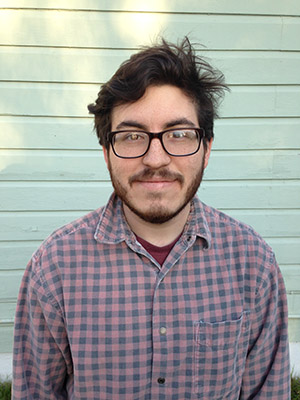As a new media artist developing courses in the TCU School of Art, I am often asked, “what is new media?” While it can be many things, I strive to introduce my students and fellow faculty to new and emerging technologies that can be applied to a traditional studio arts practice.
My New Media Video Art course serves to introduce students to the basics of working with several forms of time-based media. While students quickly ask if they will need to buy an expensive video camera, I remind them that the camera on their cellphone is one hundred times better than the camera that I first used to create videos. Due to its constant presence and ease of deployment, I encourage my students to use these tools they carry in their pockets every day. They are required to create a one-second video each day of the semester as a form of mental exercise, which led to the student curated TCU One Second Film Festival just this past semester. Over 130 TCU student films from the One Second Film Festival were screened in Houston, with the screening lasting just over two minutes.
For my Beginning New Media course, we focus on the creation of interactive electronics for artists. To empower students early in the course, we walk around our building or the campus looking at automated systems that we engage with every day. Looking at something like a handicap-accessible door, immediately the students realize that buttons, motion sensors, and light sensors are all around us. Even more interesting, they begin to realize that these socially acceptable forms are designed (and we are unknowingly trained) for a specific somatic gesture that they can mimic or adopt in their project. A common light switch forces my hand into a particular form by muscle memory; we typically turn the lights on or off with a pointed finger rather than a closed fist. A red switch or button on an object indicates a level of risk, either to the user or the environment. A fire alarm exemplifies this perfectly, often being contained by a plastic housing or glass covering. This additional layer of security forces the user to really consider if they are witnessing a “real” emergency. I encourage you to watch the main crosswalk on University Drive by our campus library with your students. A beeping alert designed for the visually impaired lets bystanders know it is safe to cross the street. However, the students permanently engaged with their cellphones/Twitter/Facebook have adopted this audio indicator unknowingly and often walk blindly into traffic as soon as the beep begins. While completely fascinating as a social study, these interactions allow students to borrow elements from these automated systems for their projects. My students know that if they place a large red button in the center of a gallery, a visitor may be hesitant to push it. This hesitation on the part of the visitor could build a desired sense of suspense in a gallery setting, or a student may wish to utilize a more inviting method of interaction.
As I am building entirely new courses in the TCU School of Art, I’m introducing students to completely foreign tools and techniques that can be overwhelming or complicated at times. I do a demonstration for my class each time something new is introduced, and make sure that each student feels comfortable with the new material and understands any safety precautions that must be taken. Recently, I’ve begun wearing a head-mounted video camera for these demonstrations so that students may see a first-person point-of-view tutorial they can access to anytime.
With the advent of products like Google Glass and other wearable technologies, I see this technique becoming a critical component to the “classroom of tomorrow.” While my current technique only allows students to view the video on a streaming video site, I look forward to utilizing the “Hangout” feature on Google Glass, which would allow for a live video connection to students in and out of the classroom. The advantages for distance learning are immediately obvious, though my real interest lies in the collaboration with other university programs and research nodes around the world. To be able to view a live robotics demonstration in London in the morning and get a personal tour of the MIT Media Lab in the afternoon sounds like something straight out of a science-fiction film but is rapidly approaching the realm of possibility.

This article was written by Nick Bontrager, School of Art, for the Fall 2013 Issue of Insights Magazine.